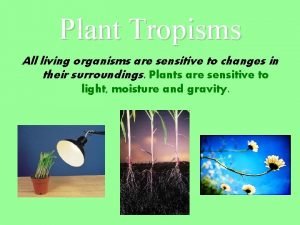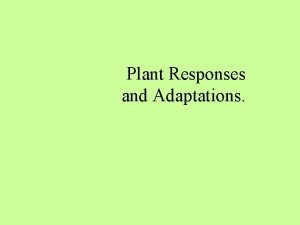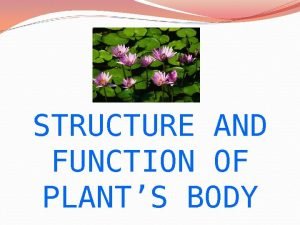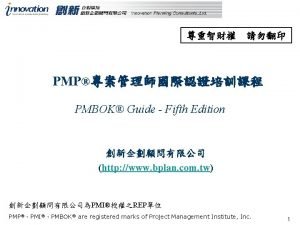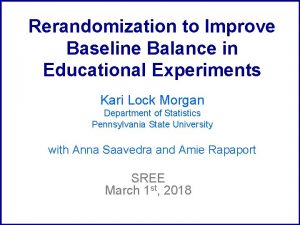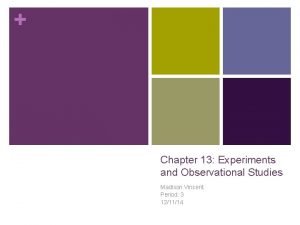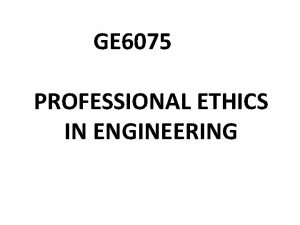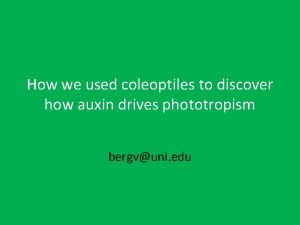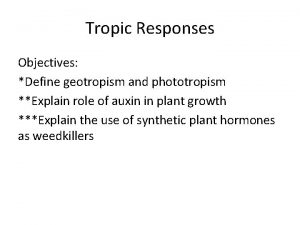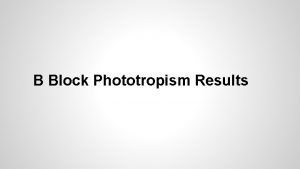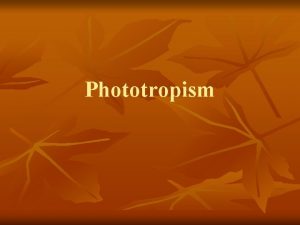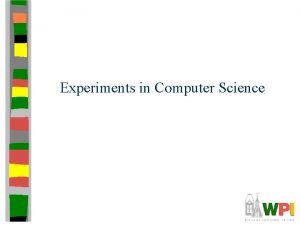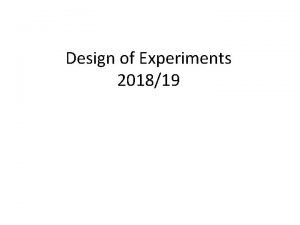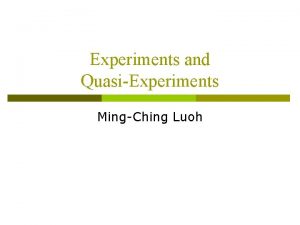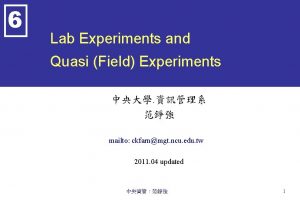Phototropism experiments Overview of experiments Coleoptiles Coleoptiles are
















- Slides: 16

Phototropism experiments Overview of experiments

Coleoptiles • Coleoptiles are the tubular spear-like sheath that protects the first foliage leaves of germinating grass seedlings as they move up through the soil. • Coleoptiles of oats and other grasses were commonly used for phototropism experiments because: 1. Are greatly sensitive to light 2. Have a simple structure

Darwin (1880)

• Darwin found out that the coleoptiles only respond to light if the tip was illuminated therefore this must be the light sensitive region. • He also found that the response occurred some distance behind the tip therefore some form of ‘message’ must pass back from the tip to the rest of the plant.


What Darwin found out That phototropism consists of three stages: 1. Detection of stimulus from the tip. 2. Transmission of the signal to the region behind it. 3. Response (either elongation of the shaded side or decreased elongation of the illuminated side).

Boysen-Jensen (1913) • Looked at the nature of the message transmitted from the tip by interrupting the pathway in various ways: 1. replacing the tip 2. adding agar jelly to the tip 3. adding cocoa butter to the tip 4. using mica strips on either side of the tip


What Boysen-Jensen found out 1. The message (signal) doesn’t require intact cells (replacing a severed tip did not prevent a response). 2. The message must be a water-soluble chemical (could pass through an aqueous barrier like agar jelly, but not cocoa butter which creates a lipid barrier). 3. The message passes down the shaded side. 4. Since the message passes down the shaded side, it must stimulate extension.


Paal (1919) • Showed that when the tip of a decapitated coleoptile was replaced, bending resulted, even in darkness. • Showed that light was not necessary for the production of the chemical signal (later called auxin), but was needed for it to move to the shaded side.


Went (1926) • The experiments carried out by Darwin, Boysen-Jensen and Paal showed that when a coleoptile is illuminated on one side, some form of water-soluble, growth-stimulating chemical passes down the shaded side. • Went developed an experiment to collect the growth substance – The Avena curvature test.

What did Went find out • To collect the growth substance, Went left the coleoptile tip on an agar block for several hours. • He then placed the agar block on an coleoptile stump. • This way, he could collect the chemical in the agar and use it to produce tropic bending. • Later on, Went found that the curvature induced by the agar was proportional to the number of tips it had been in contact with, hence the concentration of the chemical. • Overview of experiments - video

• Went was then able to compare concentrations of the chemical using the angle of the coleoptile as a measure of concentration (ie the greater the angle, the higher the concentration of the chemical).

The Avena curvature test • Went used Avena (oat) coleoptiles for his experiment. • The Avena curvature test is an example of a bioassay, in which the concentration of a substance is expressed in terms of its biological effect. • A few years after Wents’ experiments, the growth producing chemical he was measuring was named auxin – indole acetic acid (IAA). • IAA is the principal auxin causing phototropism in plants.
 Antigentest åre
Antigentest åre Phototropism
Phototropism Higher biology unit 3 revision
Higher biology unit 3 revision What is external and internal stimuli
What is external and internal stimuli Phototropism
Phototropism Which tropism is best illustrated
Which tropism is best illustrated What do phototropism and geotropism enable plants to do?
What do phototropism and geotropism enable plants to do? Phototropism
Phototropism Example of phototropism
Example of phototropism Design of experiments pmp
Design of experiments pmp Rerandomization to improve covariate balance in experiments
Rerandomization to improve covariate balance in experiments Chapter 13 experiments and observational studies
Chapter 13 experiments and observational studies Balanced outlook on law
Balanced outlook on law Construction studies portfolio example
Construction studies portfolio example Design of experiments six sigma
Design of experiments six sigma Merits of standard deviation
Merits of standard deviation Science experiments for highschool
Science experiments for highschool





